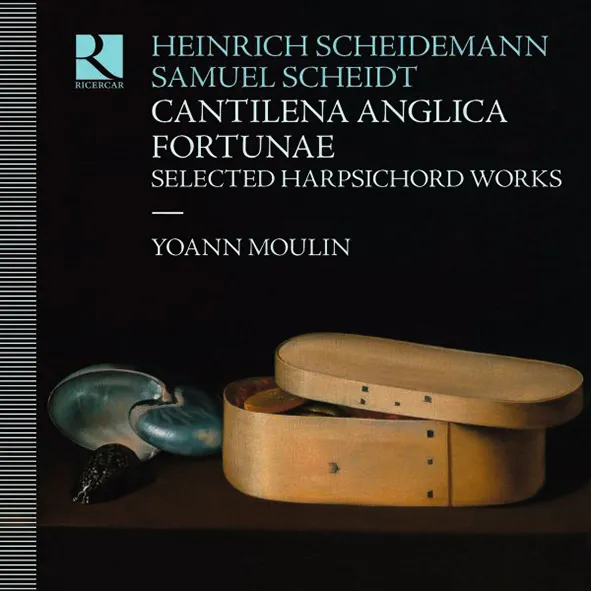
Scheidemann Pavana Lachrymae; Fuga, etc; Scheidt Cantilena Anglica Fortunae; Courante, etc Yoann Moulin (harpsichord) Ricercar RIC 394 55:35 mins
Heinrich Scheidemann and Samuel Scheidt were composers who worked in Amsterdam in the early years of the 17th century, and what united them was that they both studied there with the organist Jan Pieterszoon Sweelinck. As Jerome Lejeune’s liner note explains, Sweelinck’s organ improvisations in the Oude Kerk drew admirers from far and wide; the attraction of his music lay in the fact that it combined influences from the liturgies of the Catholic, Calvinist and Lutheran traditions, and dance styles from all over Europe. The musics of Scheidemann and Scheidt sit so cosily together on this CD that they might have emanated from the same brain. For harpsichordist Yoann Moulin, their music is both fascinating and mysterious. ‘Emotion is formal and sentiment is architectural,’ he writes gnomically, adding that its ‘disarming all-inclusiveness can echo within me with a deep mysticism’. That may be over-egging the pudding, given the routine quality of the dances here, but other pieces possess a singular gravity and grace.
Scheidt’s particular thing was sets of variations, in which he shows a Houdini-like ability to pursue his line through a labyrinth of passagework; his variations on the theme of a Palestrina madrigal attain real splendour at their close. Scheidemann is a master of expressive simplicity, best demonstrated by his treatment of Dowland’s famous ‘Pavana Lachrymae’. Meanwhile Scheidt’s inventive imagination is fired by the English lute song ‘Fortune my foe’, another melody beautified by Dowland. Yoann Moulin’s instrument is a replica of an early 17th-century Rückers which has a warm and noble sound – words which could equally well describe Moulin’s playing.
Michael Church